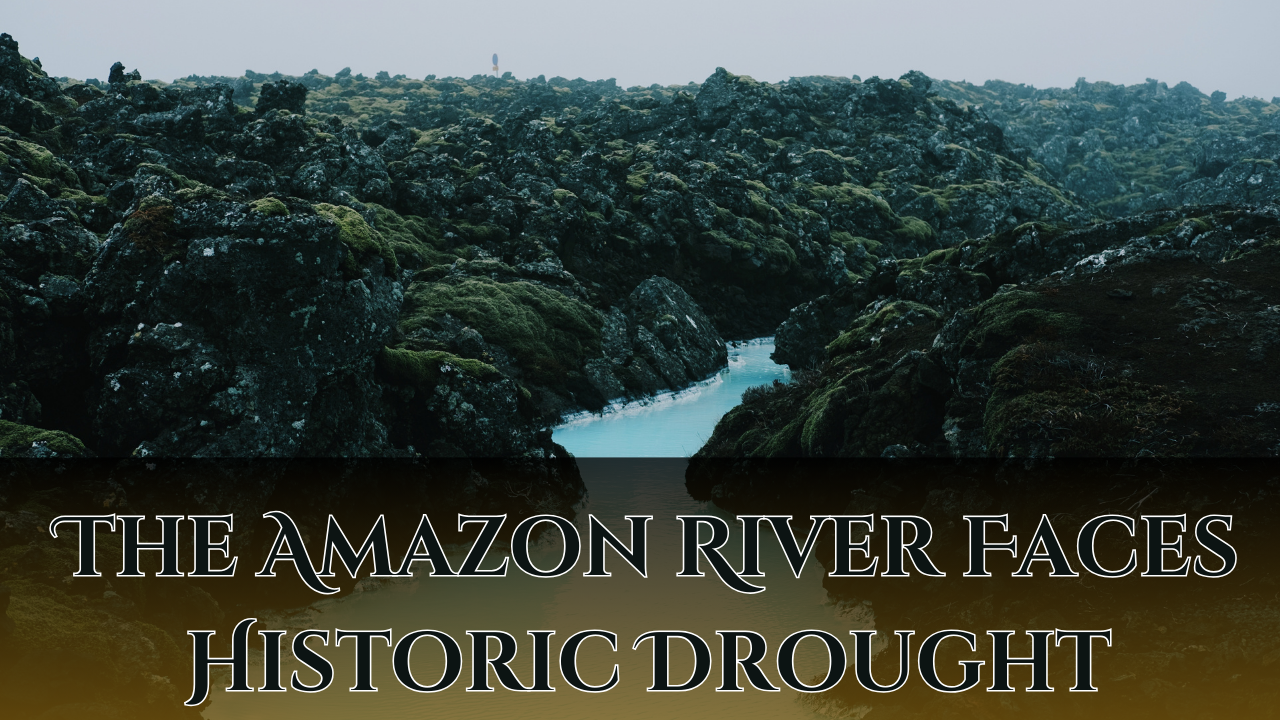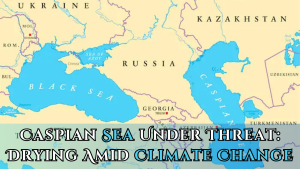The Amazon River Faces Historic Drought
Context:
The Amazon River, renowned as the world’s largest river, is facing an unprecedented crisis as climate change-induced droughts continue to dry up its vast stretches.
More on News:
- According to the Brazilian Geological Service, water levels in parts of the Amazon are at historic lows, with some areas 25 feet below average.
- This alarming trend extends to three major tributaries of the Amazon, which themselves span over 1,000 miles and have also seen historically low water levels.
The Amazon, a crucial component of the Earth’s ecosystem, is the largest river by volume and hosts a diverse array of aquatic life, including piranhas and pink river dolphins. The river reaches depths of up to 400 feet in some areas, capable of accommodating ocean liners. However, the dredging initiative underscores the severe measures governments must take to mitigate the impacts of extreme weather on transportation and daily life.
The Impact of Drought:
- Recent reports highlight the dramatic toll that drought has taken on the Amazon and its tributaries. The Negro River, one of the Amazon’s main tributaries, has seen its water levels plummet to record lows.
- In just three months, the river’s depth at the port in Manaus dropped from nearly 27 metres to just 13.9 metres.
- This drastic reduction has left riverine communities stranded, with authorities scrambling to provide potable water and water purification systems.
Economic and Social Consequences:
- The low water levels have hindered basic activities such as transporting children to school and delivering essential supplies like medicine and drinking water.
- Supply ships are struggling to navigate the shallows, impacting the transportation of goods and people.
- The fishing industry, a mainstay for many communities, is also suffering as access to traditional fishing areas becomes limited. This has led to a surge in the cost of bottled water and other essential goods in remote areas.
Climate Change as the Culprit:
- Rising temperatures in Brazil, averaging 2 degrees higher since the 1980s, have lengthened the dry season in the Amazon by a month compared to the 1970s.
- The consequences of climate change and the El Niño weather pattern have resulted in diminished rainfall, leaving the rivers unable to recover from consecutive years of severe drought.
- The loss of trees due to deforestation has further contributed to the rainforest’s inability to retain moisture and shade vegetation, making it more susceptible to wildfires.
- A report by World Weather Attribution revealed that global warming is draining waterways in the Amazon, killing hundreds of endangered dolphins and isolating millions of people.
Brazil Dredges Amazon River to Address Drought:
- To address the ongoing drought, Brazil is starting a major dredging project in the Amazon River to deepen sections and maintain the transportation of people and goods despite severe water shortages.
- The dredging process involves removing sediment from shallow areas and redistributing it to deeper parts of the river.
- Dredging the Amazon isn’t a new practice, but the Brazilian government plans to conduct continuous dredging over the next five years to address ongoing drought conditions.
Challenges and Implications:
- Scientists warn that dredging may disrupt aquatic ecosystems and could release toxic mercury buried in the riverbed, which poses risks to fish and other wildlife.
- Concerns also exist regarding increased turbidity, which can limit sunlight for aquatic plants and disrupt the ecological balance.
Way Forward:
- Residents of isolated riverside villages, like Tauary, have faced severe challenges due to the drought. With limited access to towns for essential supplies, the community hopes the dredging will provide much-needed relief.
- Alternative Solutions Suggested: Instead of dredging, building water wells and rain collection systems might be more sustainable solutions to prepare communities for recurring droughts.
Subscribe to our Youtube Channel for more Valuable Content – TheStudyias
Download the App to Subscribe to our Courses – Thestudyias
The Source’s Authority and Ownership of the Article is Claimed By THE STUDY IAS BY MANIKANT SINGH





